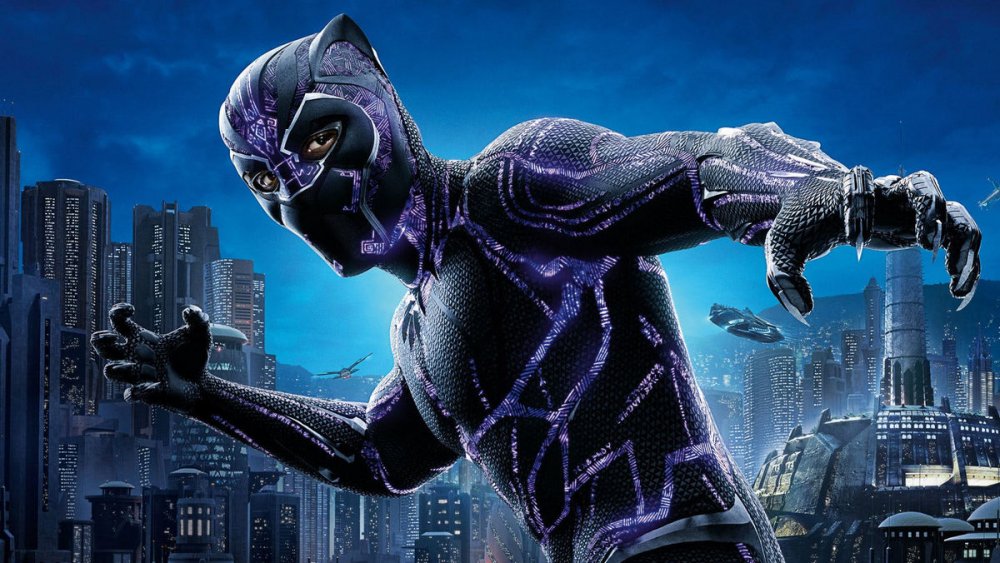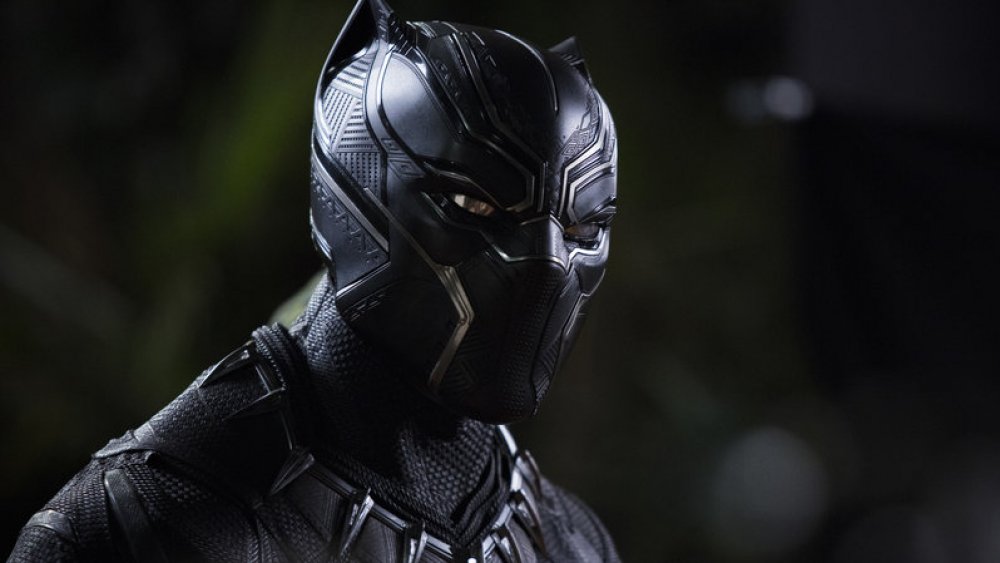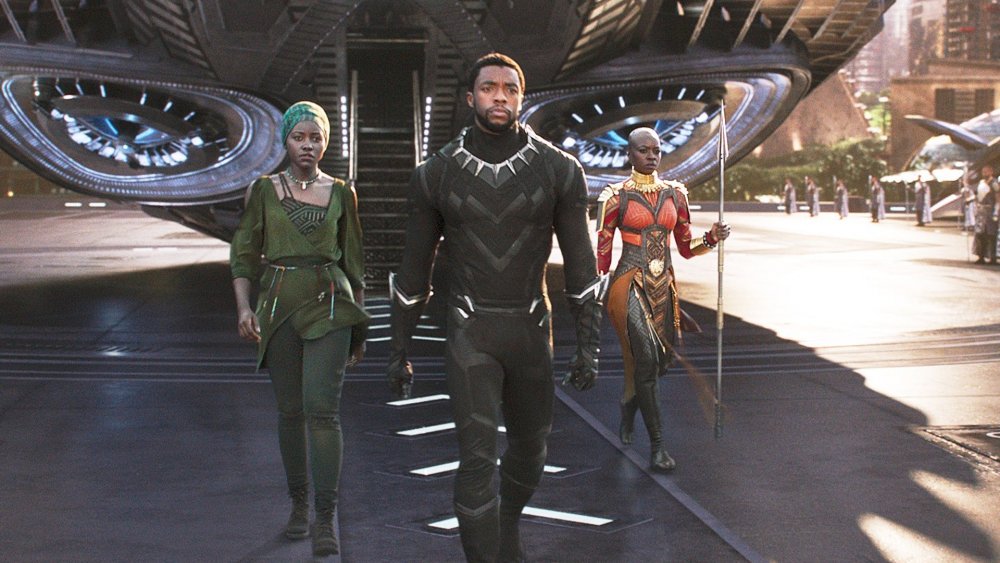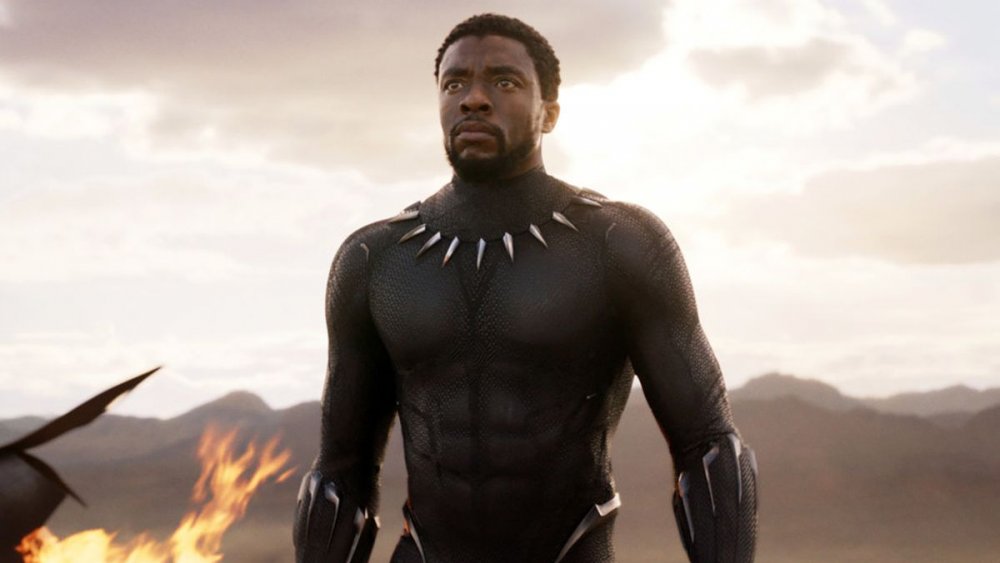How The Black Panther Costume Was Made - Exclusive
From casting the perfect actors to portray crime-fighters and the troublemakers they aim to bring down, to locking in the perfect script that honors the comic book source material and delivers something fresh to audiences of all ages, to building the in-universe world with custom sets and high-quality CGI, the process of bringing any film to life takes the efforts of many, many people. That goes doubly so for a superhero movie in the Marvel Cinematic Universe, particularly the rich and immersive Black Panther. The film, starring Chadwick Boseman as the King of Wakanda and titular superhero, featured sprawling, eye-candy sets and gorgeous costumes — the standout of which was Black Panther's suit.
Looper recently spoke with Dorotka Sapinska, the assistant costume designer of specialty costumes on the film, and learned a great deal about how the Black Panther costume was made. As she tells it, the process was a total team effort.
Sapinska worked closely with Ruth Carter, Black Panther's costume designer, and "had a little chain of people" in Los Angeles who were contributing their creative expertise to the movie's costume design.
"Our whole department was initially based out at West Hollywood at Hargate Costumes, and then we basically split the team. Ruth went to Atlanta with a team of people and we stayed in LA and produced all the specialty costumes. We had various FX houses making everything for us," she explained. "All the women's stuff was coming out of Hargate and with Mary Ellen [Fields, specialty costume manufacturer on Black Panther]. And then the Panther suit was with Russ [Gautier, design supervisor: perception on Black Panther] and then we had other companies making other things, but it was all sort of coming back to Hargate Costumes who were doing a lot of the soft components."
Designing the Black Panther costume
While Ruth Carter worked with a developer to come up with an idea for the Black Panther suit, Dorotka Sapinska "did a lot of the fabric designs" — with the help of Carter, of course. She shared with Looper, "Ruth and I developed the fabric design for the Panther suit, and we then gave it to the Marvel illustrators and they laid that on top of their drawings because what happens with a lot of the Marvel characters is that Marvel has their own design room. There are probably about 25 illustrators that work there and so we would get an illustration and then we would have to try and make sense of it, in terms of how this is going to become reality."
Sapinska added that "the bulk of Ruth's design process came from" the time prior to the costume design department being split between Los Angeles and Atlanta — which actually worked out in the long run, as "it's very hard to do more of that heavy design work [...] once you get too close to the shoots."
Making the Black Panther suit — and the rest of the film's costumes — took teamwork
Sapinska went on to detail that the speciality costumes for Black Panther — "everything apart from the contemporary stuff," like what Michael B. Jordan's villainous Killmonger wore in day-to-day life — were made in Los Angeles and shipped to Atlanta. This process required the contributions of a few different teams.
"Depending on whether we had had any access to any of the cast, they would be fitting [costumes in Atlanta], and so we would prep it to a certain point and they had a little specialty team in Atlanta that was on [fittings] but also fixing everything after fittings, making sure that things could actually fit together," she said. "That's quite an important part of a movie like that, to have that set up so that you can be on the ground and fixing things as they break. So basically, as things were needed we were just manufacturing like crazy."
Doubling (and tripling) up on Black Panther costumes and ensuring range of motion
It's one thing to design a costume and have it look good on the actor who's meant to wear it throughout the duration of a film. It's another thing entirely to make said costume able to withstand various stuntwork and the wear-and-tear that goes along with it. Of course, a superhero movie like Black Panther piles all that and more onto actors and their stunt doubles, which meant that the film's design team had to create multiple versions of the suit in the event that one or more would get damaged during filming.
Sapinska detailed that one version was the "hero, photo-ready costume" for lead actor Chadwick Boseman, and others were made for use by different people (i.e., stuntmen) and for different scenarios (like if Boseman or his stunt double needed to fly). She added that any costume modifications — such as places along the costume to attach wires for those aforementioned flying shots — are "taken out in CG, but they physically need to be accommodated into the costume."
What Sapinska and the costume team also had to keep in mind was ensuring that the suits were dynamic. This meant selecting exactly the right fabrics to allow for movement.
"A lot of the fabrics that we use, they look like satin fabrics, but they are predominantly made on a stretch base and printed. There's a really, really great company in LA that does all the printing for all the Marvel costumes," she said. "And it's a very specialized form of screen printing that is done onto the stretch fabric so that you get a three-dimensional quality to them. It also allows for the actor to move really freely or the stunts to move really freely."
In the end, the Black Panther costume looked incredible on screen — and the film wound up winning an Academy Award for Best Costume Design.



